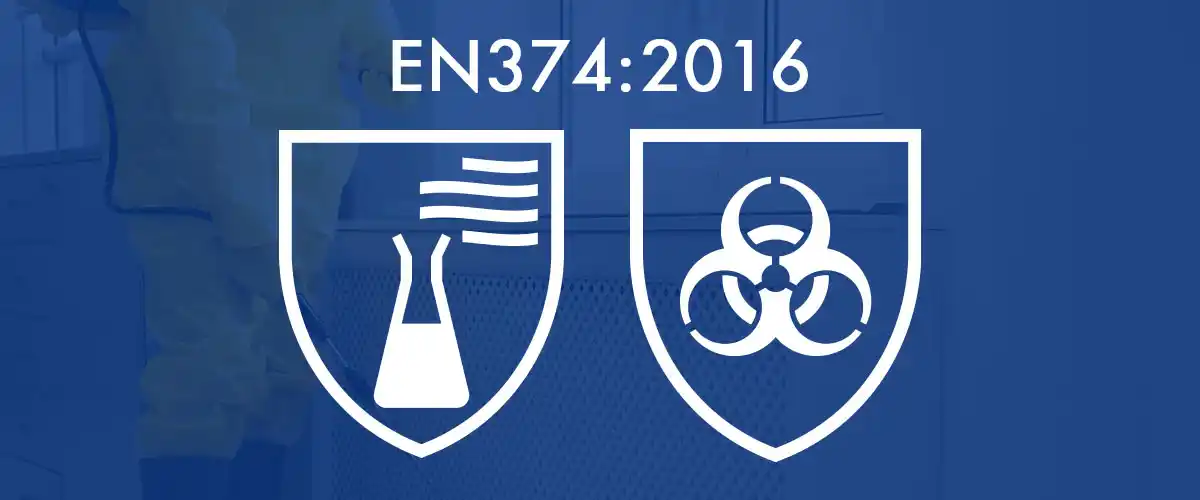

This is a group of standards specifying the capability of gloves to protect the user against chemicals and/or micro-organisms. The group consists of five different parts where each one is a standard in it’s own.
EN374-1: Mechanical and physical integrity
Specifies performance criteria for gloves protecting against chemicals. It includes requirements for user information and product marking. The standard also require the gloves to fulfil general requirements according to EN420.
EN 374-1:2016 defines a list over 18 test chemicals.
| Table of test chemicals | |||
| Code | Chemical | CAS no | Category |
| A | Methanol | 67-56-1 | Primary alcohol |
| B | Acetone | 67-64-1 | Ketone |
| C | Acetonitrile | 75-05-8 | Nitrile compound |
| D | Dichloromethane | 75-09-2 | Chlorinated paraffin |
| E | Carbon disulphide | 75-15-0 | Organic compound containing sulphur |
| F | Toluene | 108-88-3 | Aromatic hydrocarbon |
| G | Diethylamine | 109-89-7 | Amine |
| H | Tetrahydrofurane | 109-99-9 | Heterocyclic & Ether compound |
| I | Ethyl acetate | 141-82-5 | Ester |
| J | n-Heptane | 142-82-5 | Saturated hydrocarbon |
| K | Sodium hydroxide 40% | 1310-73-2 | Inorganic base |
| L | Sulphuric acid 96% | 7664-93-9 | Inorganic mineral acid |
| M | Nitric acid 65% | 7697-37-2 | Inorganic mineral acid |
| N | Acetic acid 99% | 64-19-7 | Organic acid |
| O | Ammonium hydroxide 25% | 1336-21-6 | Organic base |
| P | Hydrogen peroxide 30% | 7722-84-1 | Peroxide |
| S | Hydrofluoric acid 40% | 7664-39-3 | Inorganic mineral acid |
| T | Formaldehyde 37% | 50-00-0 | Aldehyde |
Letter codes of tested chemicals are specified under the pictogram for EN374-1 as per the following examples:
EN374-1
Type A
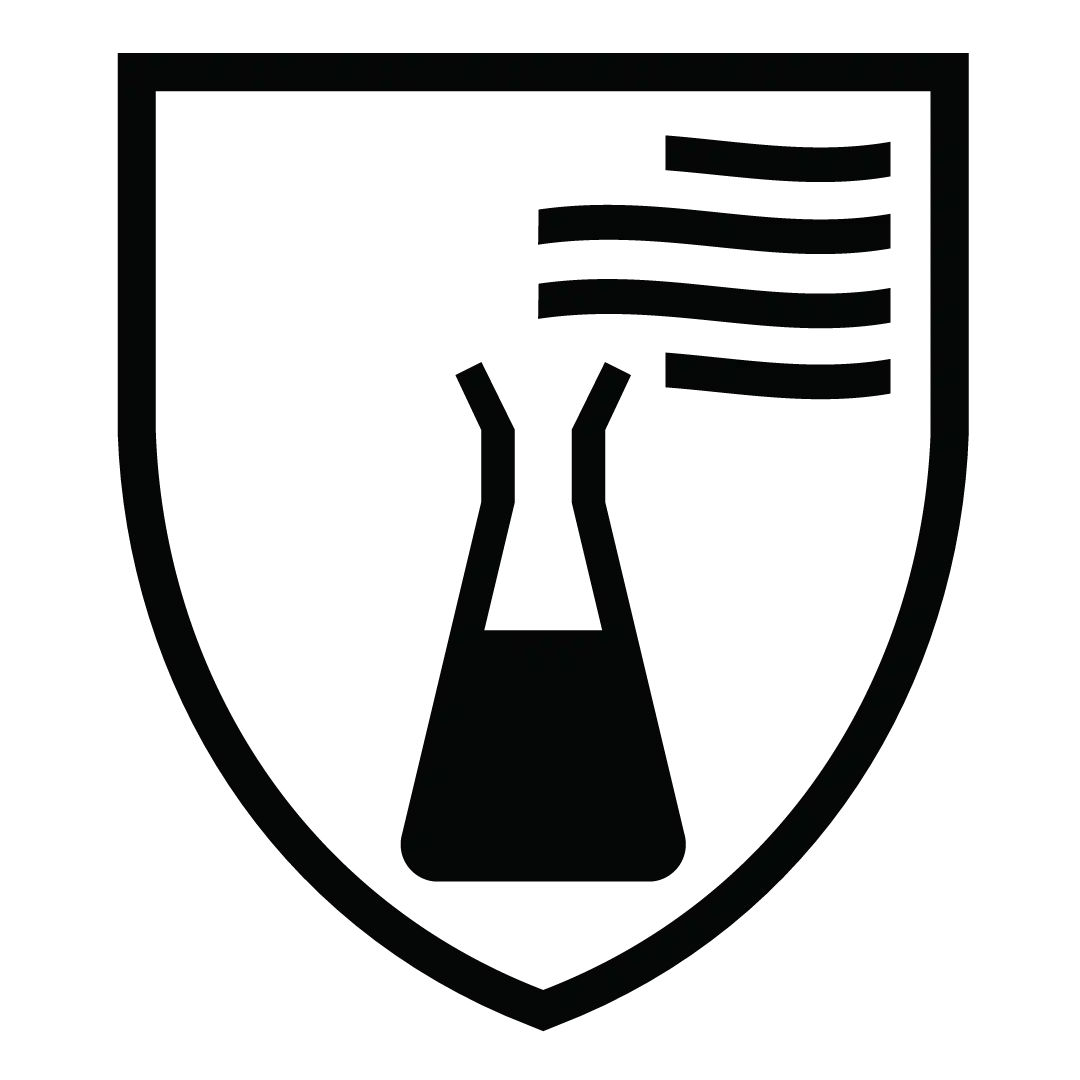
AJKLNT
Protection for at least 30 minutes against 6 chemicals or more in the list.
EN374-1
Type B
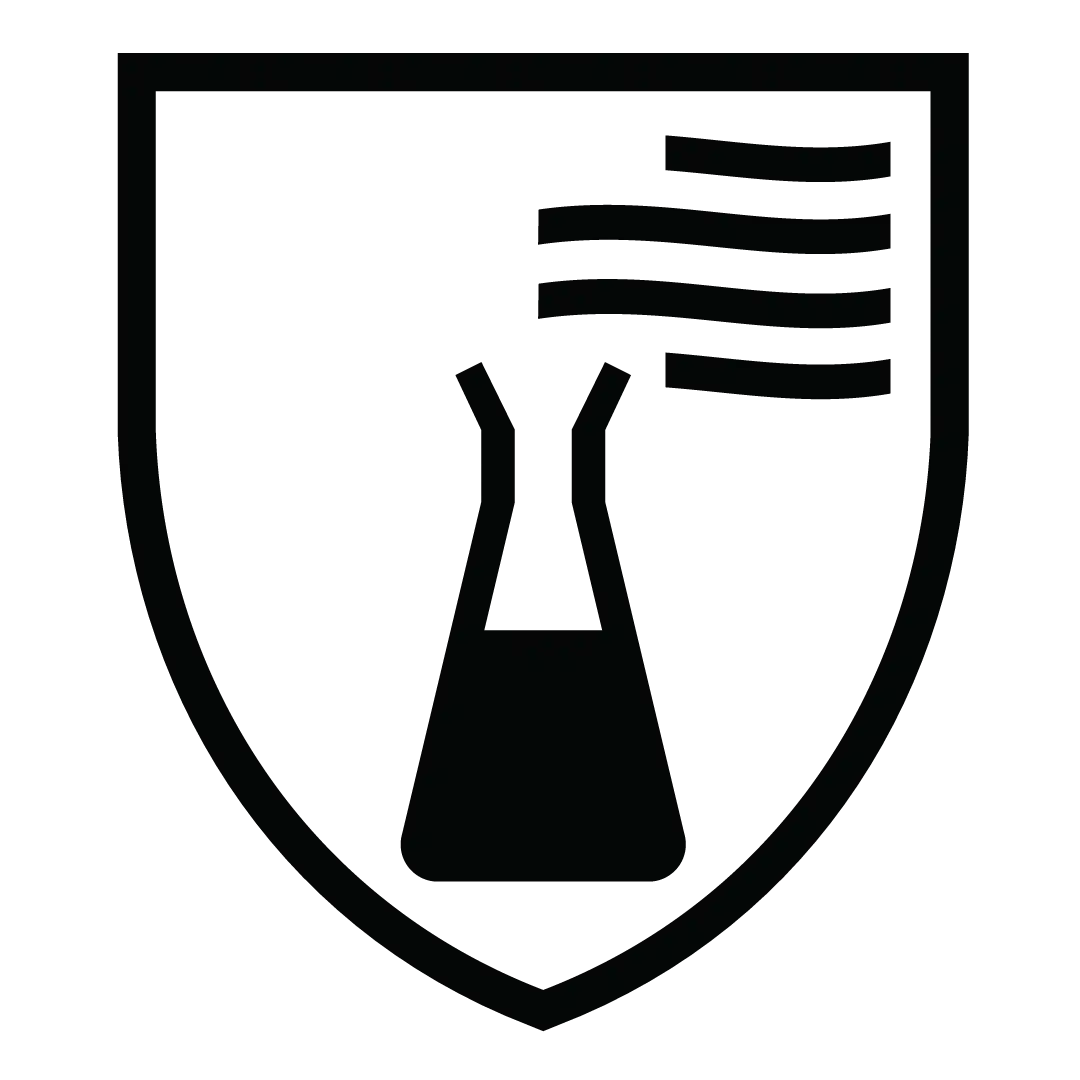
KPT
Protection for at least 30 minutes against 3 chemicals or more in the list.
EN374-1
Type C
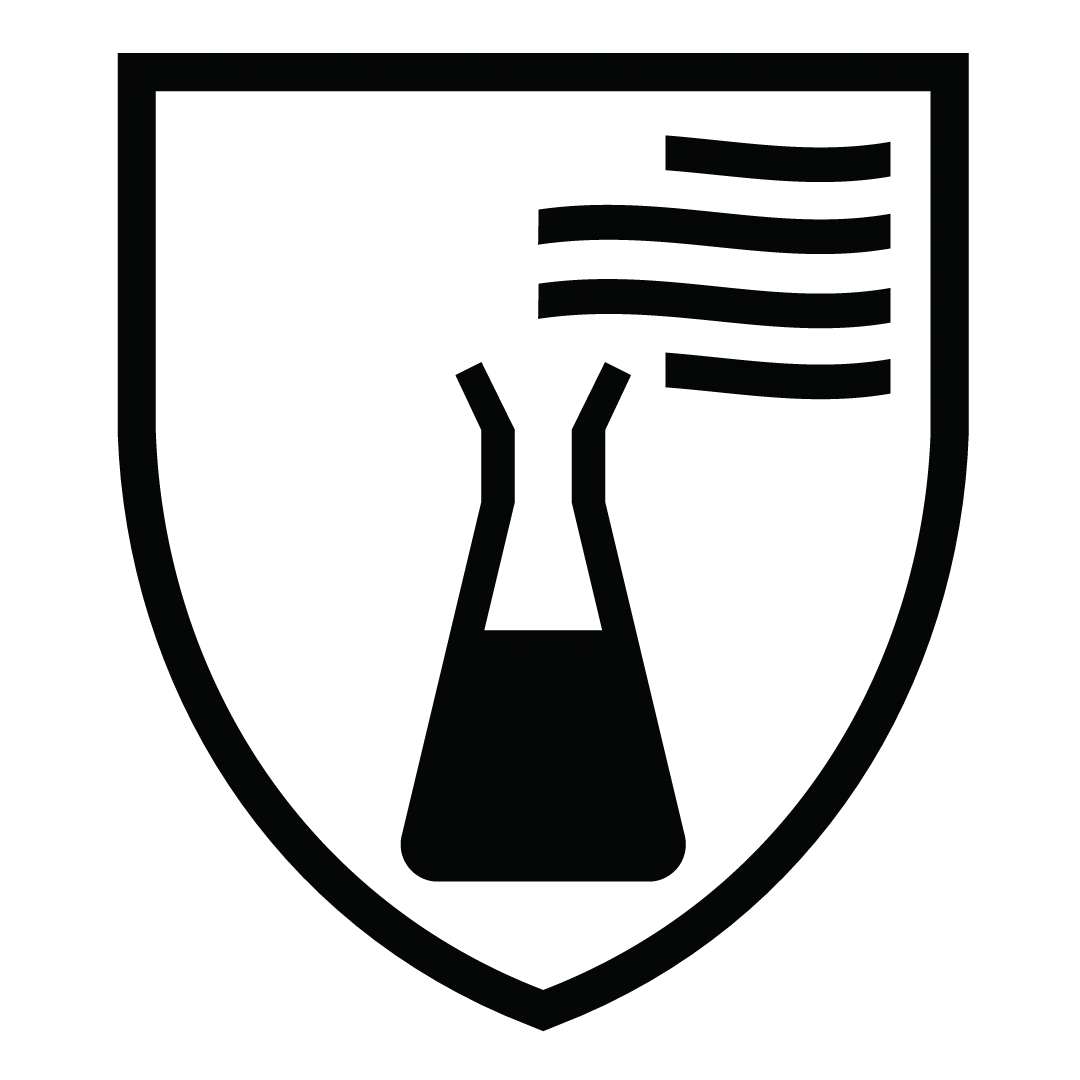
K
Protection for at least 10 minutes against 1 chemical or more in the list.
Please observe that the test results only applies for the chemical that has been tested (see table). If the glove is exposed to a mixture, where a tested chemical is included the protective properties may be totally different even if every chemical in the mixture has been tested individually.
EN374-2: Resistance to penetration
Penetration is a physical process whereby a liquid or air penetrates a fabric by passing through pores, seams or pinholes in the fabric on a non-molecular level.
Two tests are performed:
• Air leak test
• Water leak test
Each production batch must also fulfil certain minimum requirements on acceptable level of quality (AQL).
EN-374-3: Resistance to permeation by chemicals
Permeation is a process by which a potentially hazardous chemical moves through a material on a molecular level. In the laboratory, permeation is measured by the time a potentially hazardous chemical takes to be detected on the inside of the glove.
It gives an indication of how long a glove can be used with a certain chemical.
EN374-4: Resistance to degradation by chemicals
Degradation is a negative change in one or more properties of a material due to contact with a chemical. The material may display swelling, discolouration, a change in appearance, hardening or softening. If this occurs, there is a risk that the protective properties have changed and that the glove no longer give the intended protection.
The principle of this test is to assess if a change has occurred in the glove after continuous contact with a chemical. It is determined by a puncture resistance test similar to that of EN 388:2016.
EN374- 5: Performance requirements for micro-organisms risks
This standard has two categories for classification of protection against micro-organisms:
• Protection against bacteria and fungi
• Protection against bacteria, fungi and viruses
Protection against bacteria and fungi can be claimed if penetration (EN374-2:2013) and EN 420 general requirements are met.
It is possible to declare that a glove provides protection against viruses if it meets the requirements of ISO 16604:2004 procedure B.
EN374-5 approval means the glove protects against bacteria and fungi. If the protection also includes viruses it is indicated as per below example:
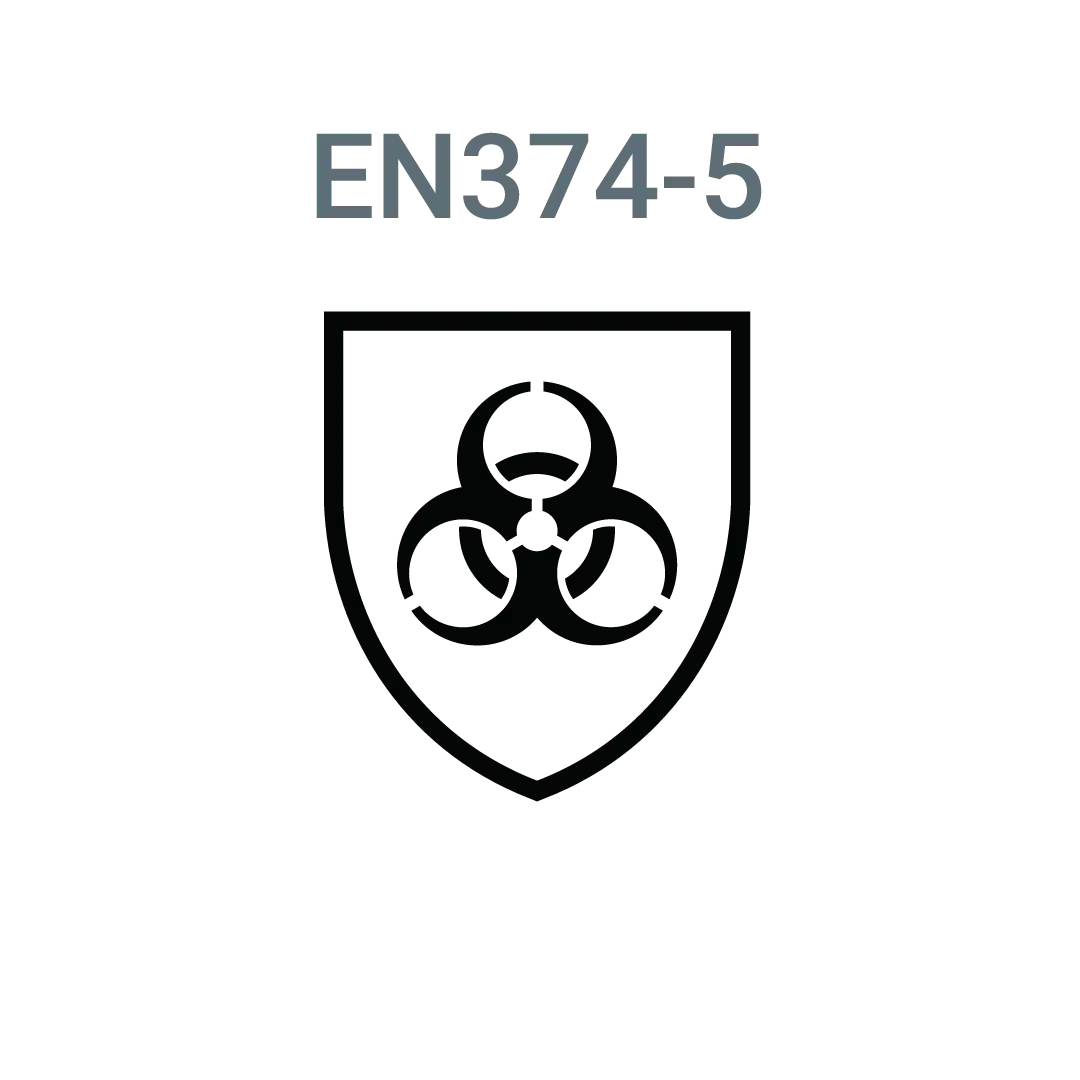
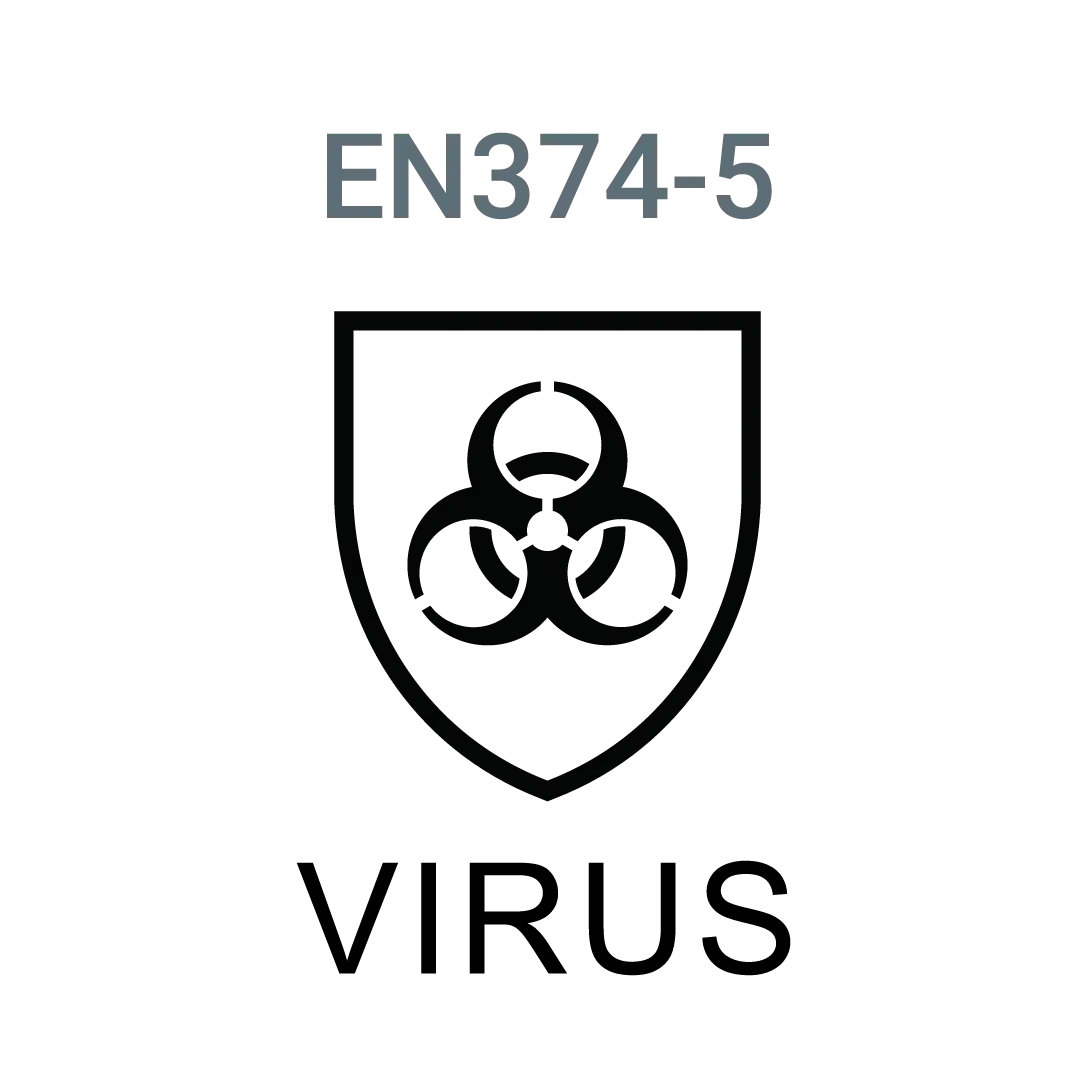
EN659:2003 – Protection against thermal risks, for firemen
EN421:2010 – Protection against ionizing radiation